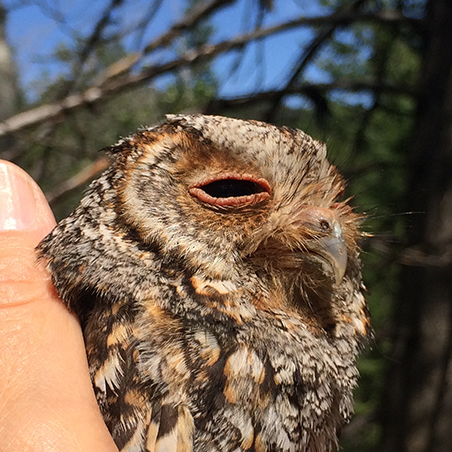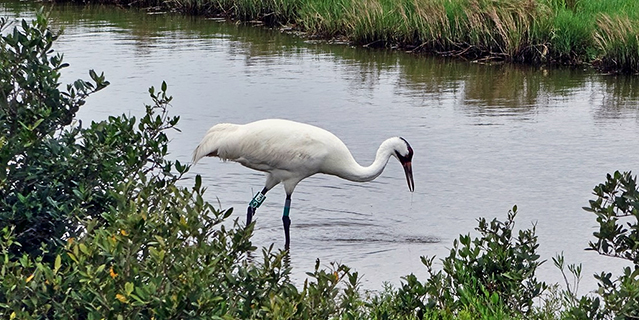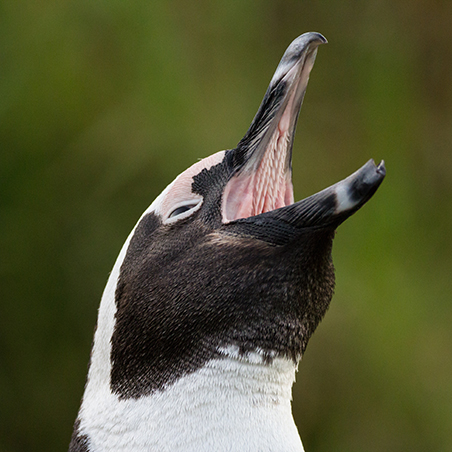What Can Birds Tell Us About Climate Change?
By Brendan Hyatt
Owls and Climate Change
Many of the United States’s small, fragile owl species find their home out west. Species like the Flammulated Owl (Psiloscops flammeolus), the Northern Saw-whet Owl (Aegolius acadicus), the Elf Owl (Micrathene whitneyi), and others live in aspen and coniferous forests. They use tree cavities, small, hollow openings such as those carved by woodpeckers, to find refuge from outside threats. These are vital spaces for these tiny owls to nest and shelter.
Soon, however, this delicate order may be devastated by climate change. The rich aspen forests owls call home may largely vanish. Natural tree cavities, crucial for owl survival, will begin to disappear. Additionally, climate-related alterations might disrupt the owls’ food supply: for instance, owl prey, which includes mice and insects, are affected, impacting other crucial factors for owl survival.
Birds and Climate Change: The Big Picture
These owls are no exception: birds, in general, are especially sensitive to climatic shifts. Climate change has already led to the destruction of vast tracts of bird habitat. For seabirds, rising temperatures, sea level rise, and ocean acidification make it difficult to nest, find food, and generally survive. Birds’ food sources are also increasingly volatile. Birds of prey who rely on eating insects must adapt as climate change reduces prey availability.
Birds of all types are changing their migratory patterns and shifting their ranges in response to changing temperatures and novel threats. It is no wonder that, in 2019, National Audubon Society scientists found that two-thirds of all North American bird species are at risk of extinction due to climate change. And the number of birds in North America has already dropped by roughly 30 percent since 1970.
Scientists are making the best of this troubling landscape—and as they have studied the threats birds face, they discovered an unexpected positive. Because birds are so sensitive to climatic shifts, data on their behavior provide scientists with valuable information about climate dynamics. This data also serve as indicators of the behavior of other species that are harder to measure.
Additionally, thanks to citizen scientists and birders, there is a relative abundance of data on birds. Citizen science databases like Cornell University’s eBird have documented hundreds of millions of sightings, helping scientists track and understand bird behavior and the climate phenomena this behavior reflects. In fact, the National Audubon Society report referenced above was partially based on the vast pool of data collected by citizen scientists and birders. This type of data is invaluable for tracking changes over time and understanding the impact of climate change.
Unexpected Opportunities for Bird Conservation in the Climate Crisis
This type of citizen science engagement will be essential as we respond to climactic changes and threats. Earthwatch scientists are leading the charge in collecting data on the intersection of avian wildlife and climate change, and they’re harnessing the power of participatory science to do it. Earthwatch scientists on our Following Forest Owls in the Western U.S. expedition are working to understand and address threats to owl survival.
In Utah, researchers are working with volunteers to assess the efficacy of artificial nest boxes on Flammulated Owl nesting success and productivity in a system likely to have significant aspen decline due to climate change. In Arizona, researchers are looking at a broader set of owls and analyzing threats to their survival, collecting data that will be indispensable to future efforts.
And that’s just one example of the work Earthwatch is doing to study and protect birds. In 1941, there were 15 wild, migratory whooping cranes in North America known to science, a steep drop from a peak of about twenty thousand. For decades, Earthwatch scientists and volunteers have worked to restore these majestic creatures.
Earthwatch researchers have had a hand in notable milestones on the path to whooping crane restoration. In 2000, the first whooping crane chicks ever born in the wild to captive-raised parents were hatched in Texas under the watch of Earthwatch scientists. Today, there are between 550 and 600 Whooping Cranes in the wild and about 830 overall.
On the other side of the world, in South Africa, Earthwatch researchers and volunteers have gathered data on penguin populations that informed the creation of a marine protected area and led to new regulations on local fisheries. As birds worldwide face the threat of climate change, Earthwatch scientists are tackling the issue head-on, and they’re leveraging volunteer-collected data to understand distinct threats to birds and climate change.



.
The Future of Bird Conservation and Climate Change
Our birds are counting on us. Together, we can protect the delicate ecosystems supporting avian wildlife. The survival of thousands of bird species hinges on our response to the climate crisis. We can make a difference by supporting science-based interventions, participating in volunteer science, and advocating for strong environmental policies. Whether your contribution involves reporting bird sightings in your area, reducing your carbon footprint, or joining an Earthwatch expedition, you can take positive action.
Want to join in? By embarking on an Earthwatch expedition, you can contribute directly to critical scientific efforts that help protect birds worldwide. Contact one of our Expedition Advisors to be part of a future expedition team!
.
Sign up for the Earthwatch Newsletter
Be the first to know about new expeditions, stories from the field, and exciting Earthwatch news.
.
.
.